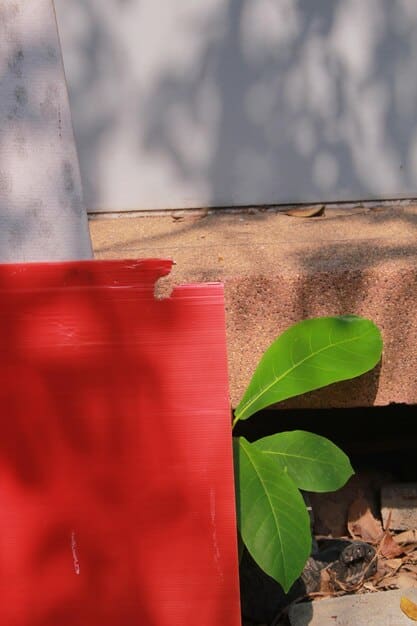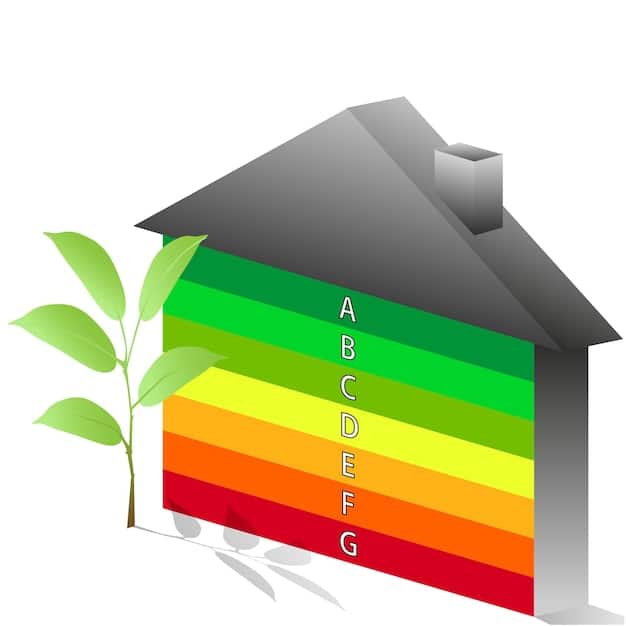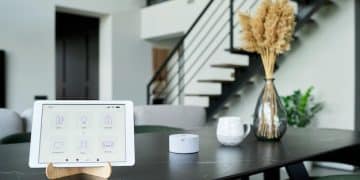The Future of Sustainable Housing: Innovations to Watch in 2025

The Future of Sustainable Housing: Innovations to Watch in 2025 revolves around embracing innovative materials, energy-efficient designs, smart technologies, and community-focused approaches to create eco-friendly homes that minimize environmental impact and enhance residents’ quality of life.
The world is changing, and so are our homes. As we look towards 2025, the concept of sustainable housing is no longer a niche idea but a necessity. The Future of Sustainable Housing: Innovations to Watch in 2025 involves incorporating radical technologies and eco-conscious designs that redefine how we live, work, and interact with our environment.
What is Sustainable Housing?
Sustainable housing refers to the creation and management of residential buildings in a way that minimizes environmental impact and maximizes resource efficiency. It encompasses various aspects, from the materials used in construction to the energy sources that power the homes.
The Core Principles of Sustainable Housing
At the heart of sustainable housing are several key principles. These include reducing carbon footprint, conserving energy and water, utilizing eco-friendly materials, and promoting healthy indoor environments.
The Benefits of Embracing Sustainability
Adopting sustainable housing practices brings numerous benefits. It not only helps protect the environment but also enhances the quality of life for residents, reduces utility costs, and increases property value.

In essence, sustainable housing is about building responsibly and creating homes that are both environmentally sound and economically viable.
Innovative Building Materials
One of the most significant advancements in sustainable housing is the development of innovative building materials. These materials are designed to be more eco-friendly, durable, and efficient than traditional options.
Bamboo: The Sustainable Alternative to Wood
Bamboo is rapidly gaining popularity as a sustainable building material. It is a fast-growing, renewable resource that offers excellent strength and durability, making it an ideal alternative to traditional wood.
Mycelium: Growing Your Own Home
Mycelium, the root structure of mushrooms, is another groundbreaking material. It can be grown into various shapes and used to create bricks, panels, and insulation. Mycelium is biodegradable and has excellent insulation properties.
Recycled Plastics: Giving Waste a New Life
Recycled plastics are being repurposed into building materials, such as composite lumber and insulation. This helps reduce plastic waste and lowers the carbon footprint of construction.
- Reduced Carbon Footprint: Using recycled materials significantly lowers the environmental impact of construction.
- Cost-Effective: Recycled plastics can be more affordable than traditional building materials.
- Durable and Long-lasting: Composite lumber made from recycled plastics is resistant to rot, insects, and moisture.
These innovative materials represent a significant step forward in creating sustainable and eco-friendly homes that minimize environmental impact.
Energy-Efficient Designs
Energy-efficient designs are crucial for reducing the environmental impact of housing. These designs focus on minimizing energy consumption through passive heating and cooling, insulation, and strategic use of natural light.

Passive Heating and Cooling
Passive heating and cooling techniques leverage natural elements to regulate indoor temperatures. This includes designing homes to maximize sunlight exposure in winter and provide shade in summer.
High-Performance Insulation
Effective insulation is essential for reducing energy loss. Materials like spray foam, cellulose, and sheep’s wool offer excellent insulation properties, helping to maintain consistent indoor temperatures.
Smart Windows for Energy Conservation
Smart windows can automatically adjust their tint to control the amount of sunlight entering a home. This helps reduce the need for artificial lighting and air conditioning.
Implementing energy-efficient designs not only lowers energy bills but also reduces the carbon footprint of homes, contributing to a more sustainable future.
Smart Home Technologies for Sustainability
Smart home technologies are transforming the way we manage energy and resources in our homes. These technologies provide homeowners with greater control over their energy consumption, water usage, and overall environmental impact.
Smart Thermostats and Energy Management Systems
Smart thermostats learn your heating and cooling preferences and automatically adjust temperatures to conserve energy. Energy management systems provide detailed insights into energy consumption, allowing you to identify areas for improvement.
Water Conservation Technologies
Smart irrigation systems use weather data and soil moisture sensors to optimize watering schedules, reducing water waste. Low-flow fixtures and smart water meters help conserve water indoors.
Automated Lighting Systems
Automated lighting systems use sensors and timers to control lighting based on occupancy and natural light levels. This helps reduce energy consumption and prolong the life of light bulbs.
- Reduced Energy Consumption: Smart technologies optimize energy usage, leading to lower utility bills.
- Water Conservation: Smart irrigation and low-flow fixtures minimize water waste.
- Enhanced Convenience: Automated systems provide greater control and convenience for homeowners.
By integrating smart home technologies, homeowners can actively manage their environmental impact and create more sustainable living environments.
The Rise of Prefabricated and Modular Homes
Prefabricated and modular homes are gaining traction as a sustainable housing solution. These homes are built in factories, which reduces waste and construction time, and allows for greater precision and quality control.
The Benefits of Prefabrication
Prefabrication offers numerous advantages, including reduced construction waste, faster build times, and lower costs. It also allows for greater design flexibility and customization.
Sustainable Materials in Prefab Homes
Prefab homes can be built using a variety of sustainable materials, such as bamboo, recycled steel, and engineered wood. This ensures that the homes are both eco-friendly and durable.
Energy Efficiency in Modular Designs
Modular designs can be optimized for energy efficiency through features like high-performance insulation, passive solar heating, and smart home technologies. This helps reduce the environmental impact of the homes.
Prefabricated and modular homes offer a sustainable and efficient alternative to traditional construction, making them an increasingly popular choice for eco-conscious homeowners.
Community-Focused Sustainable Developments
Sustainable housing is not just about individual homes; it also involves the creation of community-focused developments that prioritize environmental stewardship and social well-being. These developments integrate green spaces, shared resources, and community gardens to foster a sense of community and reduce environmental impact.
Integrating Green Spaces and Parks
Incorporating green spaces and parks into housing developments provides numerous benefits. It helps improve air quality, reduce the urban heat island effect, and provides recreational opportunities for residents.
Shared Resources and Facilities
Shared resources, such as community gardens, tool-sharing programs, and electric vehicle charging stations, help reduce individual consumption and promote resource efficiency.
Community Gardens and Local Food Production
Community gardens allow residents to grow their own food, reducing the need for transportation and promoting healthy eating habits. They also provide opportunities for social interaction and community building.
Community-focused sustainable developments create vibrant and eco-friendly neighborhoods that prioritize both environmental and social well-being.
The Future of Policy and Incentives
Government policies and incentives play a crucial role in推动the adoption of sustainable housing practices. These policies can encourage developers and homeowners to invest in eco-friendly technologies and designs.
Government Regulations and Building Codes
Stricter building codes that mandate energy efficiency and the use of sustainable materials can drive the adoption of green building practices. Regulations that promote water conservation and waste reduction can also have a significant impact.
Financial Incentives and Tax Credits
Financial incentives, such as tax credits, rebates, and grants, can make sustainable housing more affordable for homeowners and developers. These incentives can help offset the upfront costs of eco-friendly technologies and materials.
Public Awareness and Education Programs
Public awareness and education programs can help consumers understand the benefits of sustainable housing and encourage them to make eco-conscious choices. These programs can also provide training and resources for builders and developers.
Supportive policies and incentives are essential for creating a sustainable housing market and ensuring that eco-friendly homes are accessible to a wider range of people.
| Key Aspect | Brief Description |
|---|---|
| 🌱 Sustainable Materials | Use of bamboo, mycelium, and recycled plastics reduces environmental impact. |
| 💡 Energy Efficiency | Designs focus on passive heating/cooling, insulation, and smart windows. |
| 💧 Water Conservation | Smart irrigation and low-flow fixtures minimize water waste. |
| 🏘️ Community Focus | Shared resources and green spaces promote community and sustainability. |
Frequently Asked Questions
▼
A sustainable home minimizes environmental impact through efficient energy use, eco-friendly materials, water conservation, and waste reduction.
▼
Use renewable energy, upgrade insulation, switch to energy-efficient appliances, and reduce water consumption to shrink your carbon footprint.
▼
Initial costs may be higher, but long-term savings on energy and water bills, plus incentives, often make sustainable homes more economical.
▼
Bamboo is strong, renewable, and fast-growing, making it an excellent sustainable alternative to wood in construction projects.
▼
Smart thermostats, water meters, and lighting systems optimize resource use, reducing waste and energy consumption effectively.
Conclusion
As we move closer to 2025, the innovations in sustainable housing are set to transform the way we live. By embracing eco-friendly materials, energy-efficient designs, and smart technologies, we can create homes that are not only environmentally responsible but also enhance the quality of life for residents. Supportive policies and community-focused developments will further drive the adoption of sustainable housing practices, ensuring a greener and more sustainable future for all.





